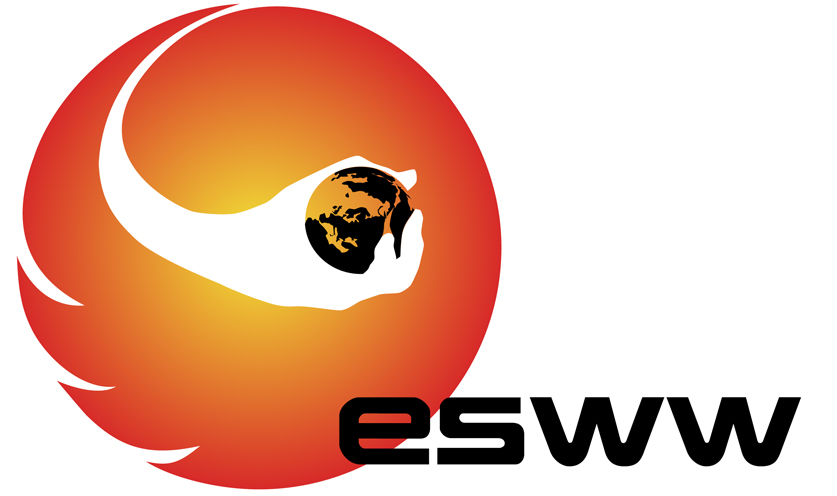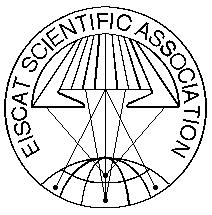
November 5 - 9, 2012, Brussels, Belgium
Posters session 1
European Space Weather Landscape: Current Perspectives and Requirements for the Future
| Session: | Poster session 1 |
| Date: | Monday, November 05, 2012 |
| Time: | 16:00-16:30 |
| Seq | Time | Title | ||
| 1 | 00:00 |
The Effects of solar Activity onto Transformers in the Greek National Electric Grid
Zois, Ioannis; Zois, IoannisOANNIS PPC, GREECE We are reporting on effects (both short and long term) of solar activity onto the greek national electric grid, in particular large transformers from 1989-2010. I do not think this topic fits in any of the prescribed categories. In 8ESWW last year there was a splinter on GIC's where some preliminary results were presented. More results are available now: Immediate-short term effects contain a list of transformer failures during stormy days (Ap>100). Long term effects are studied using statistical regression and correlation (both linear and non-linear models). |
||
| 2 | 00:00 |
Cosmic ray Measurements at the Geophysical Centre of Dourbes
Sapundjiev, Danislav; Nemry, Myriam; Stankov, Stanimir; Spassov, Simo; Jodogne, Jean-Claude Royal Meteorological Institute (RMI), BELGIUM Cosmic rays or cosmic radiation is the common name for the particles and photons which are reaching us from the outer space or from the cosmos. Ever since their discovery by Victor Hess, they have been an interesting research topic; however, despite the huge technological and scientific progress, there are still a number of open questions, including the mechanism responsible for the very high energies of cosmic ray particles, the origin of the electron component in the cosmic rays and more important the effect of cosmic radiation intensity on space weather. Cosmic ray intensity has been correlated to the production of ozone in the atmosphere, to the occurrence of cloud anomalies and to the occurrence of geomagnetic storms resulting from high solar activity. It has been shown, that it is possible to use variations in cosmic ray intensity as a precursor for ground level enhancements (GLE) and 'Forbush decrease (FD) events. Cosmic rays are studied by a variety of detector systems, situated on the Earth's surface, which are designed to detect mainly the secondary particles resulting from interactions of the primary cosmic ray particles with the atmosphere. About 90 % of the primary cosmic radiation consists of charged particles which are deflected by the geomagnetic field. The energy spectrum of the cosmic rays above the atmosphere is measured by a worldwide network of measurement stations, thus utilising the magnetic field as a spectrometer. The Royal Meteorological Institute (RMI) operates a standard 9-NM64 neutron monitor located at the RMI Geophysical Centre in Dourbes and provides real time data to the international Neutron Monitor Database (NMDB). In this presentation, we will outline the operational principles/characteristics of the neutron monitor, present the Dourbes cosmic ray observatory, the (real-time) data processing, and will discuss possible applications of these measurements. |
||
| 3 | 00:00 |
Multi-Point Observations of the Solar Corona for Space Weather
Legg, Stephen1; Glover, Alexi2; Luntama, Juha-Pekka3 1University of Manchester, UNITED KINGDOM & ESA, ESAC, SPAIN; 2ESA/ESAC, SPAIN & Rhea System, BELGIUM; 3ESA/ESAC, SPAIN Coronal Mass Ejections (CME) are an important element of space weather forecasting. Interacting with the magnetosphere, they can cause geomagnetic storms affecting many of the key systems on which our society relies. The LASCO coronagraphs onboard the SOHO spacecraft have been providing regular CME data for more than 15 years from an orbit around the Sun-Earth L1 point. More recently, with the launch of STEREO we have gained new instrumentation and vantage points, allowing imaging along the whole Sun-Earth line. The aim of this project is to consider CME observations from multiple vantage points, as viewed from a space weather forecasting perspective. Currently occupied vantage points will be discussed and example Earth directed events analysed. Additional possible vantage points will also be considered, along with their potential impact on forecasting capability. |
||
| 4 | 00:00 |
ODI - Open Data Interface
Wintoft, Peter1; Heynderickx, Daniel2; Evans, Hugh3 1Swedish Institute of Space Physics, SWEDEN; 2DH Consultancy, BELGIUM; 3ESA/ESTEC, NETHERLANDS The Open Data Interface (ODI) is a database system for storing space environment data and metadata using an SQL server. The system is compliant with the SPASE data model. Data can be ingested from text files and CDF/ISTP/PRBEM files. Currently there are more than 100 datasets in the database such as IMP8/GME, SREM, XMM/ERMD, GOES particle and radiation data, and indices such as Dst, Kp, and SSN. Adding new datasets is straightforward. If the raw data to be ingested are CDF files these are automatically converted before the data are stored into ODI. For non-CDF files, like plain text files, a few lines of code need to be edited to correctly parse the raw data files. As ODI is based on SQL it is accessible to a large range of different software platforms. As part of the development, interfaces to IDL, PHP, Python, Matlab and Java have been developed, but the ODBC interface also can provide direct access from many other programs. Interfaces to existing platforms can therefore be set up and applications have been updated to connect to the ODI system like SAAPS, SEDAT, and SPENVIS. ODI is now at version 4 with major updates of the core system. |
||
| 5 | 00:00 |
Secular Changes of ionospheric Characteristics measured by Warsaw Ionosonde.
Pozoga, Mariusz1; Tomasik, Lukasz2; Dziak-Jankowska, Beata2 1Space Research Centre, POLAND; 2Space Research Center, POLAND Ionospheric measurements carried out (with some gaps) in
Warsaw in period from 1958 to the present day. Initially were conducted
by The National Institute of Telecommunication, after 1989 measurements
were moved to the Space Research Centre. |
||






